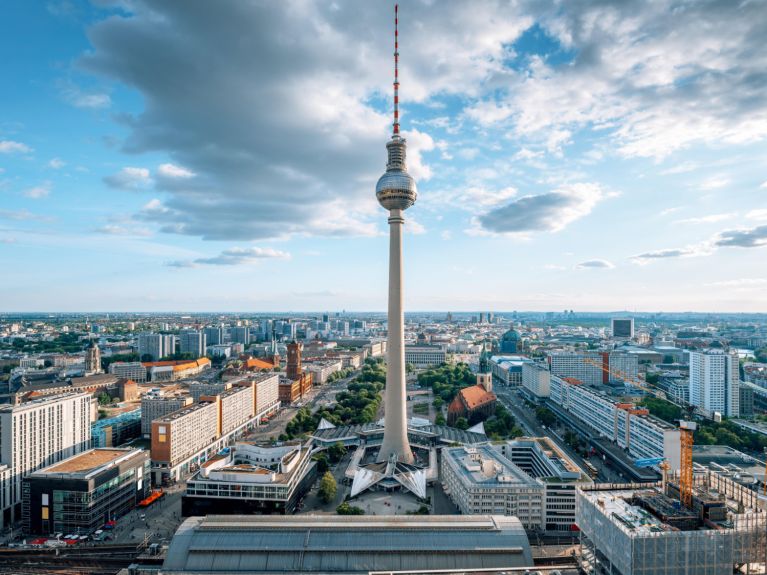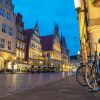Research being conducted in Potsdam into healthier towns and cities
Urban mobility is harmful to the environment and health. An international research team managed from Potsdam is developing new methods for measuring air quality.

Mobility is important. Yet traffic also affects the environment and human health – in particular road traffic, but also shipping and air travel. Traffic generates noise and reduces air quality. In addition to industrial plants and forest fires, it is one of the major sources of air pollution. The World Health Organisation (WHO) reckons that each year it results in over four million premature deaths worldwide. Air pollutants continue to pose a major environmental health risk even in Europe. A report issued by the European Environment Agency suggests that some 350,000 people a year die prematurely in the EU because they are exposed to pollutants such as particulate matter or ozone.
Net4Cities – a research project that measures pollutants
“We need to increase our efforts to reduce air pollution so that we can better protect people’s health”, says Erika von Schneidemesser from the Research Institute for Sustainability (RIFS) at the GFZ Helmholtz Centre for Geosciences in Potsdam. This expert in urban air quality, mobility and health is coordinating the new “Net4Cities” research project that is making a substantial contribution to implementing the EU’s Zero Pollution action plan – because it deals with pollutants for which there are currently no methodical measurements, but which are expected to play a more significant role in the future. The project is financed by the EU’s Horizon research and innovation programme.
Zero Pollution means for the European Union that by 2050 the pollution of air, water and soil is reduced to values that are no longer considered harmful to health and natural ecosystems. Or in other words to create a pollution-free environment and reduce noise pollution for Europe’s population. The “Net4Cities” project is focusing on air pollutants and noise pollution that arise due to traffic.
Measurement networks in 11 European cities
The international team around Erika von Schneidemesser has established measurement networks in a total of 11 cities in 10 countries across the entire European continent. These measure air and noise pollution in real time. “The idea is that we better understand the sources of air pollutants and generate longer data series to facilitate assessment of the associated health effects”, says the environmental chemist. “This also applies to noise. In this case we’re conducting measurements and traffic counts.” A better understanding of the sources of pollutants and noise will enable us to take more targeted measures in reducing them.
The cities involved are Antwerp, Barcelona, Berlin, Düsseldorf, Heraklion, Limassol, Oslo, Rotterdam, Southampton, Tbilisi and Zurich. These are mostly cities that are major transport hubs and some also have ports and airports. “We tried to select cities that have varying conditions, from their urban infrastructure to their different climate zones”, says von Schneidemesser. “And we also felt it was important to have local partners with whom we can collaborate.”
The project started in January 2024. Initially, the project coordinator explains, it involved holding talks in the partner cities and taking care of the necessary logistics. The logistical effort was considerable, since most of the new measuring devices were installed within the cities’ existing monitoring networks. The project’s approaches and results are therefore easily scalable: They can subsequently be deployed across Europe and used from a local to regional level.
Tougher EU limit values for air pollutants
Measurements have been ongoing since spring at three locations per city. Special aspects: “These in particular concern the ‘new and emerging pollutants’, in other words the air pollutants that we have not until now regularly measured and for which there are not yet any limit values.” They include ultra-fine particulates with a diameter of just 0.01 to 0.1 micrometres – thus much smaller than the particle sizes of 2.5 to 10 micrometres that have been regularly measured to date. They also include soot as a component of particulate matter as well as ammonia. Ammonia as a component of fertilizers is mainly emitted by agriculture. Emissions of this harmful gas have been declining in recent years, although they are increasing in urban traffic. This is mainly due to diesel vehicles equipped with exhaust aftertreatment systems like AdBlue to reduce emissions of the air pollutant nitrogen dioxide. A side effect is however the emergence of ammonia as an air pollutant.
The new EU Air Quality Directive came into force in December 2024. It sets stricter limits for a total of eleven air pollutants, including particulate matter and nitrogen dioxide, which must be met by 2030. Albeit these new limit values remain above the stricter recommendations issued by the World Health Organisation (WHO). Member countries now have two year to implement the directive on a national basis. Yet there are also other pollutants that are to be measured in future for which there were previously no obligatory measurements – namely ultra-fine particulates, soot and ammonia. So precisely the pollutants on which “Net4Cities” is focusing. The project is due to run until the end of 2027. The team is aiming to publish some initial results before the end of the project term.
The EU “Zero Pollution” action plan
The EU estimates that air pollution causes 400,000 premature deaths each year. The action plan indicates that this number should fall by more than 55 per cent before 2030. The Commission accordingly intends to tighten EU air quality standards in line with the new recommendations from the World Health Organisation (WHO). The issue of noise pollution is also a key focus: The proportion of people who suffer from constant traffic noise is to be reduced by 30 per cent.


